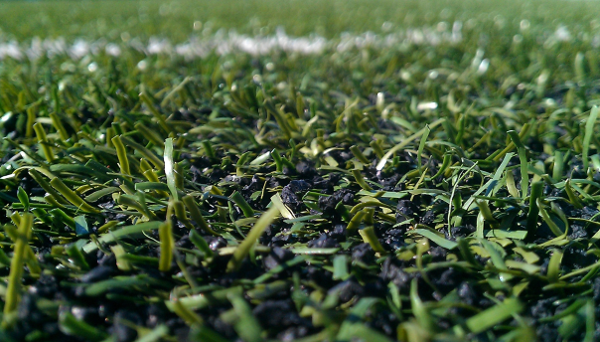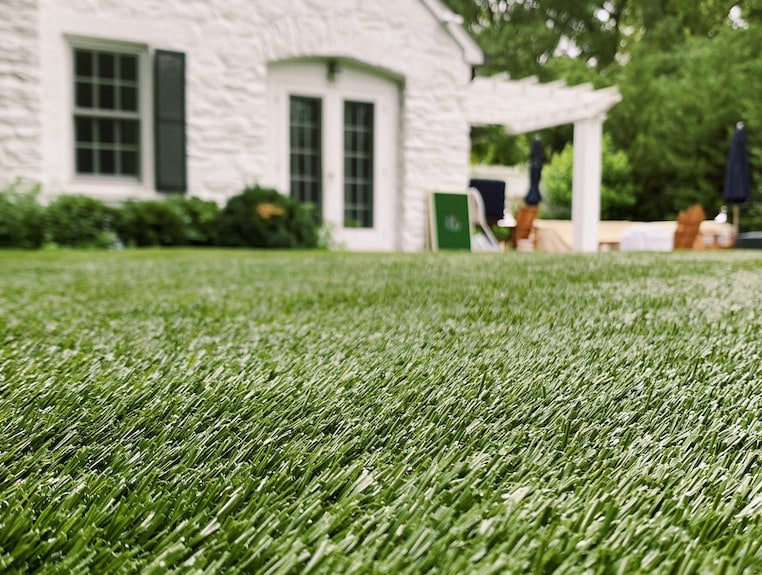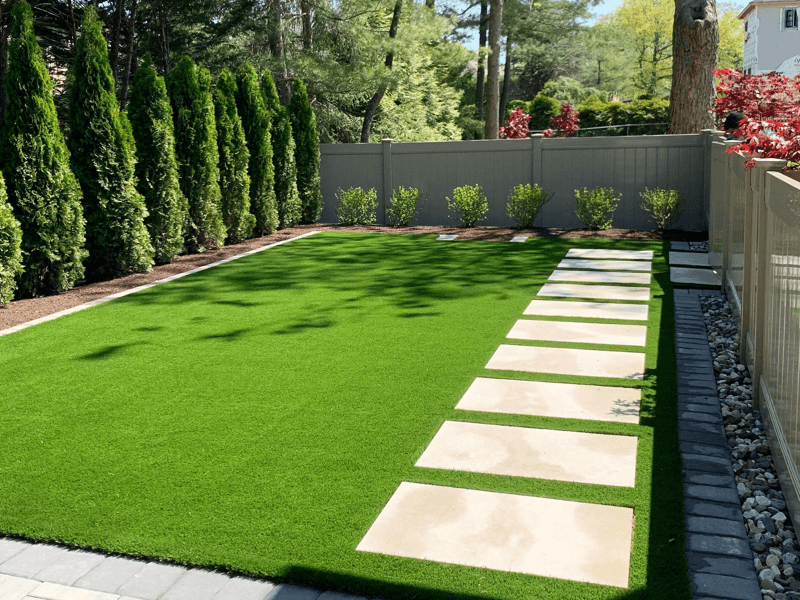Look Into the Environmental Perks of Opting for Artificial Grass Solutions
The adoption of synthetic grass remedies provides a compelling possibility to attend to pressing ecological difficulties. By considerably reducing water use and reducing the application of harmful chemicals, these choices not only advertise sustainable landscape design however also secure local ecosystems. The lower carbon footprint connected with reduced maintenance activities adds to a more lasting approach to land monitoring. The effects of these benefits extend past plain conservation efforts, increasing inquiries about their long-lasting influence on environment preservation and general environmental equilibrium. Exploring these dimensions exposes a complicated interaction worth considering.
Water Conservation Advantages
One of the most considerable advantages of synthetic grass is its capability to save water. Conventional turf lawns require significant watering, particularly in areas susceptible to drought or water restrictions. On the other hand, fabricated lawn does not require watering, substantially decreasing the overall demand for water sources. This function is especially useful in arid regions where water deficiency is a pushing issue.
By getting rid of the need for routine watering, synthetic grass adds to sustainable landscape techniques and helps minimize the environmental effect of too much water usage. The preservation of water extends to the decrease of runoff, which can lead to soil disintegration and river pollution.
Furthermore, the installment of synthetic grass enables municipalities and house owners to designate water sources extra efficiently, concentrating on necessary usages such as alcohol consumption water and agriculture. The shift towards synthetic grass not just advertises responsible water usage but likewise lines up with wider ecological objectives focused on maintaining all-natural sources.
As areas significantly focus on sustainability, the water preservation advantages of synthetic grass offer an engaging instance for its fostering in business and household landscape design tasks.
Minimized Chemical Use
The shift to synthetic grass substantially decreases the reliance on chemical treatments commonly made use of in all-natural lawn maintenance. Conventional turf management generally involves the application of plant foods, herbicides, and pesticides to promote development and control bugs. These chemicals can present risks to human health, neighborhood wild animals, and the environment, adding to dirt and water contamination.
In comparison, synthetic lawn gets rid of the demand for these damaging materials. By reducing the launch of synthetic compounds right into the ecosystem, man-made lawn promotes much healthier dirt and water systems.
Furthermore, the lack of chemical drainage related to fabricated turf setups aids shield regional waterways from air pollution, supporting water life and keeping biodiversity. Arizona artificial turf. As neighborhoods increasingly prioritize lasting techniques, opting for man-made lawn offers a viable service that lines up with environmental preservation objectives. Via this change, residential property proprietors can enjoy lush green areas without jeopardizing environmental wellness, leading the means for an extra lasting future
Reduced Carbon Impact

In addition, the installment of synthetic grass can lead to considerable water preservation. All-natural grass require considerable amounts of water for irrigation, which not only includes in the carbon footprint related to water removal and therapy however likewise pressures neighborhood water sources. On the other hand, fabricated lawn requires marginal upkeep, calling for no watering, therefore dramatically reducing water use and its linked power prices.
In addition, the long life of man-made grass contributes to its decreased carbon impact. With a lifespan of up to 15 years or even more, the demand for regular replacements is decreased, resulting in much less waste and reduced power consumption in manufacturing and disposing of traditional yard choices. Generally, synthetic grass presents a lasting choice for ecologically conscious landscape design.
Environment Preservation
Habitat conservation is a vital factor to consider in the dispute over landscaping options, especially when comparing synthetic grass to all-natural grass. All-natural turf lawns usually need comprehensive upkeep, including using plant foods, herbicides, and pesticides, which can negatively impact neighborhood communities. These chemicals can seep into the dirt and waterways, damaging native More Info plants and fauna and interrupting local habitats.
Synthetic grass gets rid of the requirement for dangerous chemicals, therefore protecting nearby wildlife and maintaining the honesty of bordering ecosystems. The installation of artificial turf can lead to the conversion of previous yard locations right into more biodiverse landscapes, such as pollinator gardens or native plant locations, which can sustain neighborhood wild animals.
Eventually, the shift to synthetic grass not only preserves water and lowers upkeep efforts but also cultivates an extra unified connection between human tasks and the natural surroundings, promoting environment conservation in the process.
Long-Term Sustainability
Long-term sustainability is a crucial consider reviewing the advantages of synthetic turf over typical lawn lawns. Among one of the most significant advantages of synthetic grass is its durability; it can last approximately 15-20 years with very little maintenance, whereas all-natural grass needs frequent reseeding and substitute. This longevity lowers the requirement for consistent resources, such as water, see post fertilizers, and chemicals, which are crucial for maintaining a healthy and balanced yard lawn.
In addition, artificial turf adds to a reduction in carbon discharges connected with grass care devices. Traditional yards frequently call for gas-powered mowers, trimmers, and blowers, every one of which add to air contamination. Phoenix turf companies. In contrast, synthetic grass gets rid of the demand for such equipment, promoting a cleaner setting
Moreover, the production of fabricated turf progressively makes use of recycled materials, improving its sustainability account. As suppliers adopt discover this info here green practices, the environmental footprint of synthetic grass proceeds to lessen.

Final Thought
The adoption of man-made turf remedies provides substantial environmental benefits, including significant water conservation, minimized reliance on harmful chemicals, and a reduced carbon footprint. In addition, synthetic grass aids in maintaining natural environments by minimizing land disruption and advertising long-term sustainability via the use of long lasting materials. Jointly, these elements highlight the possibility of synthetic grass to add positively to environmental health and wellness and supply a practical option to typical landscaping practices in a progressively resource-conscious globe.
In comparison, artificial turf does not need watering, dramatically reducing the overall demand for water resources. By lessening the launch of artificial substances right into the ecosystem, artificial grass promotes healthier soil and water systems.
Moreover, the installment of fabricated lawn can result in significant water preservation. In comparison, artificial turf requires marginal upkeep, calling for no watering, therefore significantly reducing water use and its connected power expenses.
